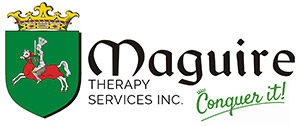Physical Therapy Can Help You Live Your Life Comfortably
If you are living with chronic pain, you are not alone. In fact, 20% of the United States population experiences chronic pain, according to the Centers for Disease Control and Prevention (CDC).
At our physical therapy clinic, we work with people every day who are dealing with the physical and mental effects of chronic pain caused by conditions like arthritis and fibromyalgia.
So, if your joints are achy and stiff, we invite you to consider working with a physical therapist in the New Year.
The top 3 benefits of physical therapy for joint pain relief
You don’t deserve to spend every day in pain, and with physical therapy you may not have to!
Here are three reasons to work with a physical therapist for your achy joints:
1. A natural, holistic treatment method
Did you know that the CDC and other professional organizations officially recognize physical therapy as a safe alternative to pain-relieving medications like opioids?
Physical therapy has been proven research studies to be effective for alleviating chronic joint pain and may even help you cut down on your medication (with your doctor’s supervision, of course).
For example, non-invasive modalities like electrical stimulation, diathermy, or ultrasound used by physical therapists can alleviate spasms and naturally block pain signals.
This kind of short-term pain relief is valuable because it helps you participate in rehabilitation exercises and get better sleep, which we know is important for overall health and stress relief. But physical therapy can also help you achieve longer-term pain relief.
2. Physical therapy can provide you long-term relief
Beyond alleviating your joint pain and stiffness, a physical therapist also uses a variety of individually tailored techniques and services that can address the root causes of your joint issues.
In the long-term, this can help you avoid or minimize daily pain, slow disease progression, and even prevent your joint problem from getting worse.
Examples include:
- Neuromuscular education techniques to improve your balance and reduce the risk of falls, which may otherwise exacerbate your pain
- Prescription and fitting of custom orthoses, braces, and other devices to support, compensate for, and/or alleviate pressure on your affected joints
- Therapeutic exercises and stretches to correct strength or mobility imbalances, promote tissue healing, and improve overall joint function and stability
- Manual techniques like joint mobilizations and massage to improve joint alignment, reduce swelling and stiffness, and break up painful adhesions
3. A physical therapist is there every step of the way
When you work with a physical therapist, he or she becomes a partner in your healing and health.
By teaching you exercises, mindfulness techniques, lifestyle modifications, breathing techniques, and safer ways to function in your daily life, your therapist can empower you to prevent recurring issues and optimize your overall health.
With less pain, greater strength, and improved function, you gain more independence and support your caregivers, too.
Could the cause of your joint pain be arthritis?
Did you know that arthritis is the leading cause of disability across the United States? According to the Arthritis Foundation, approximately 50 million people live with arthritis.
While it is possible for arthritis to develop in any joint, it most commonly affects the neck, back, hands, hips and knees.
There are two main types of arthritis that are the most common culprits when it comes to joint pain: osteoarthritis and rheumatoid arthritis.
Here is a closer look at these types of arthritis:
- Rheumatoid Arthritis: This is an autoimmune disorder in which the body’s healing systems attack the joints. This causes inflammation of the joints, which can be extremely painful. Rheumatoid arthritis usually begins in the hands, wrists or feet, but it can spread to the hips, knees or shoulders — getting progressively worse — if you aren’t proactive in combating it. If you have been diagnosed with rheumatoid arthritis, your doctor will likely prescribe pharmaceutical treatments to stave off the symptoms. However, physical therapy can be a tremendous help as well.
- Osteoarthritis: This is the most common type of arthritis by far. It typically develops later in life and can be caused by poor body mechanics, overuse of the joint or an injury. The cartilage in joints serves as a natural barrier that lubricates and distributes force during physical activity. When that cartilage breaks down and no longer provides a cushion between adjoining bones, the result is osteoarthritis. The hands, hips, knees and spine are the most common body parts impacted by osteoarthritis.
Certain ailments like gout, bursitis, lupus or tendinitis can also contribute to joint pain.
The source of your joint pain may cause the specific course of physical therapy that is recommended for you to vary.
Relieve your joint pains today!
Is it time to see what physical therapy can do for your chronic pain?
Contact our physical therapy clinic today to schedule an appointment and get on the road to a life freer from pain.
Sources:
- https://www.cdc.gov/mmwr/volumes/67/wr/mm6736a2.htm
- https://www.choosept.com/choose-physical-therapy-over-opioids-for-pain-management-choosept
Tags: physical therapy, nutrition, aches and pains, natural pain relief, natural treatment, physical activity, rehabilitation, physical therapists, chronic pain, opioids, physical health, Joint pain


